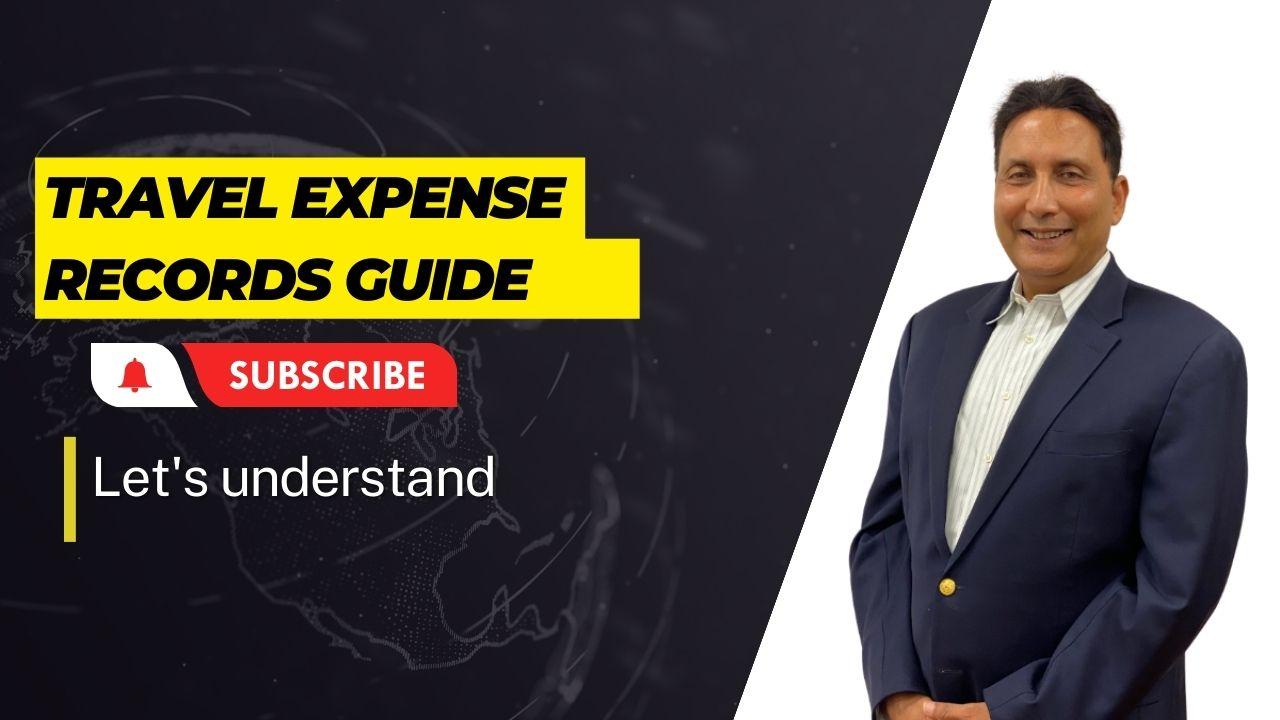
Typically, taxpayers must provide a written explanation for expenses' business purposes. This can be bypassed if the context clarifies the purpose. A canceled check plus the payee's bill often validates the cost, but alone, a check lacks proof.
Tip: Record expenses and business use near or during the expense, backed by adequate documents. Immediate records hold more value than later statements with fading recall. Writing elements daily isn't obligatory; a weekly log suffices.
To prove business expenses, here is a simple 3 part log to maintain records detailing these elements:
Category 1: Expense Breakdown
Category 2: Trip Details
Category 3: Business Purpose
By categorizing these details, you can maintain a structured and comprehensive record of your travel expenses, ensuring financial transparency and efficient tax reporting.
Keeping accurate and organized records of travel expenses is essential for maintaining financial transparency, preparing taxes, and complying with tax regulations. Here are the typical record-keeping requirements for travel expenses:
Receipts and Documentation: Keep all receipts, invoices, and supporting documents related to your travel expenses. These can include receipts for accommodations, transportation (airfare, train, car rental), meals, entertainment, and other relevant expenses. Digital copies are acceptable, but make sure they are easily accessible and legible.
Travel Itinerary: Maintain a detailed travel itinerary that includes dates, destinations, and the purpose of the trip. This helps establish the business purpose of the travel and its relevance to your business activities.
Expense Reports: Create well-organized expense reports that list each expense item, its date, location, amount, and a brief description of the business purpose. Group expenses by category (e.g., lodging, meals, transportation) for clarity.
Business Purpose Documentation: For each expense, document the business purpose. Explain how the expense relates to your business activities, such as meetings, conferences, client visits, or market research.
Mode of Transportation: If you're claiming expenses for travel, provide details about the mode of transportation used (e.g., flight, train, personal vehicle). Include ticket stubs, boarding passes, or other evidence of travel.
Lodging: Document lodging expenses, including the name and location of the hotel, check-in and check-out dates, and the purpose of your stay.
Meals and Entertainment: For meals and entertainment expenses, note the names of individuals present, their business affiliations, and the nature of the discussion or meeting.
Currency Conversion: If you're traveling internationally, keep records of currency conversion rates used for converting expenses into your local currency.
Personal vs. Business Expenses: Clearly distinguish between personal and business-related expenses. Only record and claim expenses that are directly related to your business activities.
Method of Payment: Note the method of payment (credit card, cash, etc.) for each expense.
Time and Duration: Record the time and duration of business activities during the trip. This can include meetings, conferences, site visits, and other work-related tasks.
Per Diems: If you use per diem rates for meals and incidental expenses, maintain records of the dates and locations where these rates apply.
Documentation of Approvals: If your business requires approval for travel expenses, keep documentation of the approval process and any relevant authorization.
Electronic Tracking Tools: Consider using electronic tools or apps specifically designed for tracking travel expenses. These can simplify the process and provide a centralized record.
Retention Period: Depending on tax regulations and business requirements, you may need to retain these records for several years. The retention period can vary by jurisdiction.
Remember that accurate record-keeping not only helps with tax deductions but also ensures you have the necessary documentation in case of an audit or inquiry by tax authorities. Consult with a tax professional or accountant to understand specific record-keeping requirements based on your location and business structure.
Business taxpayers are required to maintain records for the Internal Revenue Code's administration. These records should support items on tax returns until the associated period of limitations expires.
The period of limitations is the timeframe to amend a return for refunds or for the IRS to assess additional tax. Typically, it's three years from the return filing date, including timely-filed returns. If property is involved, records must be kept until the limitations period ends for the year the property is sold. This is crucial for calculating depreciation, amortization, depletion deductions, and determining gain or loss upon sale.
For taxpayers with employees, employment tax records should be retained for at least four years after tax payment.
Period of Limitations: